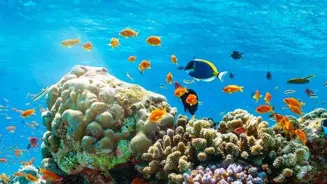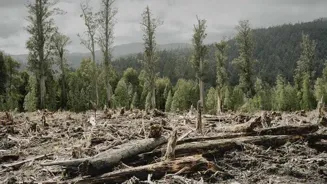Discover the critical factors endangering coral reefs and learn how we can protect these vital underwater ecosystems. Read more to unveil the hidden threats and solutions for marine conservation
The underwater
world, a realm of breathtaking beauty and teeming life, is facing a silent crisis. Coral reefs, often called the "rainforests of the sea," are dying at an alarming rate.
These vibrant ecosystems, home to a quarter of all marine life, are crucial for the health of our oceans and, indeed, our planet. Let's dive deep and explore why these precious underwater cities are fading away and what we can do to protect them.
Ocean Acidification
The Silent Killer: Imagine pouring acid onto delicate structures. That's essentially what's happening to coral reefs due to ocean acidification. Our oceans absorb a significant amount of carbon dioxide (CO2) from the atmosphere, primarily from burning fossil fuels.
This absorbed CO2 lowers the ocean's pH, making it more acidic. This increased acidity makes it difficult for corals to build and maintain their calcium carbonate skeletons. Think of it like trying to build a house with weak cement – the structure crumbles easily.
Ocean acidification weakens corals, making them more susceptible to disease and less able to recover from other stressors. This leads to slower growth and declining coral populations, ultimately jeopardizing the entire reef ecosystem.
Rising Ocean Temperatures
A Heatwave Underwater: Corals are incredibly sensitive to temperature changes. Even a slight increase in ocean temperature can trigger coral bleaching. This phenomenon occurs when corals, stressed by heat, expel the symbiotic algae (zooxanthellae) living in their tissues.
These algae provide corals with food and their vibrant colors. When corals lose their algae, they turn white (hence "bleaching") and become weakened and vulnerable. Prolonged bleaching can lead to coral starvation and death.
Climate change is driving up ocean temperatures globally, making heatwaves more frequent and intense, leading to widespread coral bleaching events. These events can devastate entire reef systems, leaving behind barren underwater landscapes.
Pollution
A Poisonous Cocktail: Pollution from land-based sources is a major threat to coral reefs. Agricultural runoff, industrial discharge, and sewage carry pollutants such as fertilizers, pesticides, and heavy metals into the ocean.
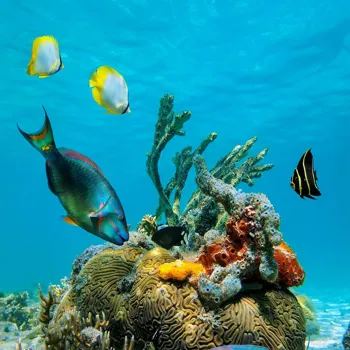
These pollutants can directly harm corals by disrupting their physiology, inhibiting their growth, and reducing their ability to reproduce. Excess nutrients from fertilizers can fuel algal blooms, which can smother corals, block sunlight, and deplete oxygen levels.
Plastics pollution is another growing concern, as corals can ingest plastic debris, leading to internal injuries and reduced feeding efficiency. Pollution weakens corals, making them more susceptible to disease and other stressors.
Overfishing
Disrupting the Delicate Balance: Overfishing, particularly of herbivorous fish like parrotfish, can have devastating consequences for coral reefs. Parrotfish play a crucial role in keeping algae in check on reefs. They graze on algae, preventing them from overgrowing and smothering corals.
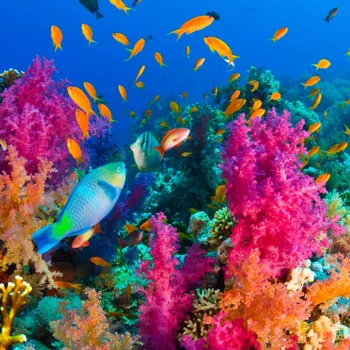
When parrotfish populations decline due to overfishing, algae can proliferate, outcompeting corals for space and sunlight. This shift from coral-dominated to algae-dominated reefs can be difficult to reverse.
Overfishing also affects the entire food web, disrupting the balance of the ecosystem and making reefs more vulnerable to other stressors. Sustainable fishing practices are essential for maintaining healthy coral reef ecosystems.
Destructive Fishing Practices
Blasting and Dragging: Certain fishing practices, such as blast fishing and bottom trawling, can cause significant physical damage to coral reefs. Blast fishing involves using explosives to stun or kill fish, but the explosions also shatter corals and destroy the surrounding habitat.
Bottom trawling involves dragging heavy nets along the seafloor, which can flatten corals and damage the delicate reef structure. These destructive fishing practices can take decades or even centuries for reefs to recover, if they recover at all.
Implementing stricter regulations and promoting sustainable fishing methods are crucial for protecting coral reefs from these destructive practices.
Sedimentation
Clouding the Waters: Coastal development, deforestation, and unsustainable agricultural practices can lead to increased soil erosion and sedimentation. When sediment enters the ocean, it clouds the water, reducing the amount of sunlight that reaches corals.
This reduced sunlight affects coral photosynthesis, which is essential for their energy production. Sediment can also directly smother corals, preventing them from feeding and breathing.
Controlling soil erosion and implementing best management practices for coastal development are important steps in reducing sedimentation and protecting coral reefs.
Invasive Species
Unwanted Guests: Invasive species, introduced from other regions, can disrupt the delicate balance of coral reef ecosystems. These species can compete with native organisms for resources, prey on corals, or introduce diseases.

For example, the lionfish, an invasive species in the Atlantic Ocean, is a voracious predator that has decimated native fish populations on coral reefs. Preventing the introduction and spread of invasive species is crucial for protecting coral reefs from these ecological threats.
Marine Protected Areas
Havens for Recovery: Establishing and effectively managing marine protected areas (MPAs) is a vital strategy for conserving coral reefs. MPAs are designated areas where human activities are restricted or prohibited to protect marine ecosystems.
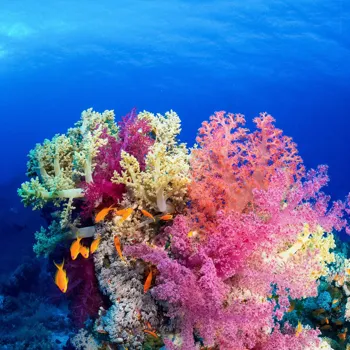
MPAs can help to reduce fishing pressure, limit pollution, and promote coral recovery. Well-managed MPAs can serve as refuges for corals and other marine life, providing a safe haven where they can thrive.
MPAs can also help to enhance the resilience of coral reefs to climate change and other stressors.
AI Generated Content. Glance/InMobi shall have no liability for the content